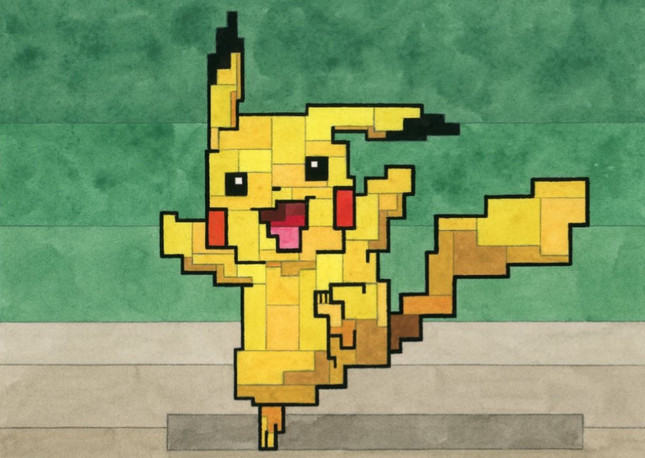
Pokemon

Adam Lister Pikachu Pokemon Archival Print by Adam Lister
Pikachu Pokémon Archival Print by Adam Lister Limited Edition on 300gsm Hot Press Matte Fine Art Paper Pop Graffiti Street Artist Modern Artwork. 2023 Signed & Numbered Print Limited Edition of 50 Artwork Size 8x6 Archival Pigment Fine Art Pikachu Pokémon Dancing Happy in Glitch Style. The Pixelated Charm of Pikachu: Adam Lister's Fusion of Art and Pop Culture Adam Lister's foray into the world of pop culture art is a vibrant intersection where nostalgia meets a modernist aesthetic. His Pikachu Pokémon archival print is a testament to this unique blend, a limited edition piece that marries the playful spirit of Pokémon with the edginess of street pop art and graffiti artwork. This 2023 signed and numbered print is a collector's delight, limited to a mere 50 pieces, each one an embodiment of both rarity and the wide-reaching embrace of street art sensibilities. Lister's work is characterized by its glitch-like, pixelated style, a visual technique that harkens back to the early days of digital graphics. The image of Pikachu, Pokémon's most recognizable figure, is deconstructed into geometric shapes and forms, creating an artwork that is at once familiar and refreshingly novel. The choice of the 300gsm Hot Press Matte Fine Art Paper for the print ensures that each color and shape is rendered with clarity and precision, much like the meticulous detail found in fine graffiti artwork. Pop Graffiti Artistry: Adam Lister's Signature Style In the world of street pop art and graffiti, the approach to subject matter can be as significant as the artwork itself. Adam Lister takes the globally beloved character of Pikachu and reimagines it through a lens that is distinctly reminiscent of 8-bit video game art. The result is a playful yet sophisticated piece that resonates with a wide audience, bridging the gap between the world of street art, typically found on urban landscapes, and the domesticated space of personal art collections. The limited edition nature of Lister's Pikachu print adds an element of exclusivity that is often sought after in the graffiti art community. The print's size, a modest 6x8, speaks to the intimacy of the piece — it is meant to be viewed up close, where the viewer can appreciate the intricacies of Lister's geometric dissections. This careful attention to form and structure is a nod to the precision and skill found in the most revered graffiti artwork, where every line and color is intentional and full of meaning. Adam Lister: A Modern Art Maestro's Dance with Pokémon Adam Lister, hailing from the United States, has positioned himself as a modern maestro of pop graffiti artwork. His archival pigment fine art pieces like the Pikachu Pokémon print are vibrant explorations of pop culture icons through the medium of watercolor-like pixelation. The artwork, described as 'dancing happy in glitch style,' captures the essence of Pikachu's playful nature, while also providing commentary on the digitization of culture and the pixel as a fundamental unit of digital art. Lister's work is a celebration of the digital age, and yet it is deeply rooted in the physicality of street pop art. The archival quality of the print ensures that, unlike street art which may fade or be painted over, this piece will endure as a lasting tribute to both the character of Pikachu and the enduring impact of Pokémon on multiple generations. Adam Lister's Pikachu print is a microcosm of the broader dialogue between popular culture and art. It is a reflection of how street pop art and graffiti can transcend their urban origins and find new expressions and audiences. Lister's unique vision and artistry ensure that this limited edition piece will be treasured not only as a work of art but also as a piece of cultural history, encapsulating the joyous spirit of one of the world's most beloved Pokémon.
$300.00


